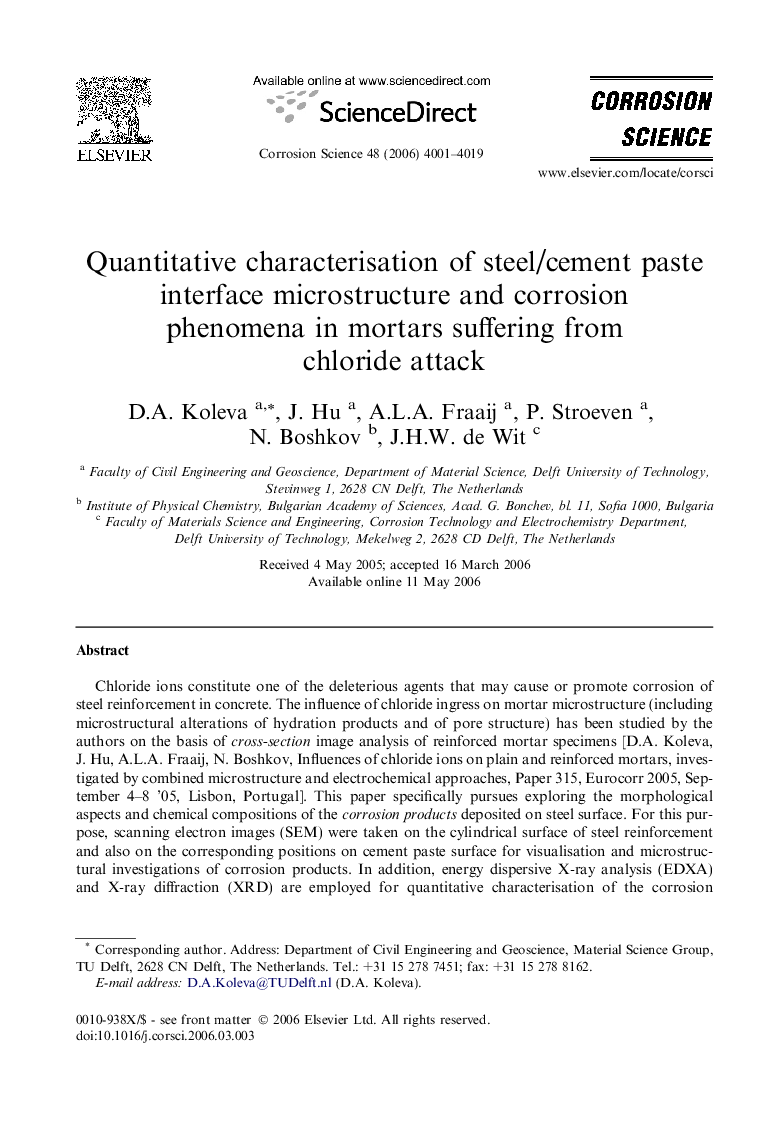| Article ID | Journal | Published Year | Pages | File Type |
|---|---|---|---|---|
| 1472112 | Corrosion Science | 2006 | 19 Pages |
Chloride ions constitute one of the deleterious agents that may cause or promote corrosion of steel reinforcement in concrete. The influence of chloride ingress on mortar microstructure (including microstructural alterations of hydration products and of pore structure) has been studied by the authors on the basis of cross-section image analysis of reinforced mortar specimens [D.A. Koleva, J. Hu, A.L.A. Fraaij, N. Boshkov, Influences of chloride ions on plain and reinforced mortars, investigated by combined microstructure and electrochemical approaches, Paper 315, Eurocorr 2005, September 4–8 ’05, Lisbon, Portugal]. This paper specifically pursues exploring the morphological aspects and chemical compositions of the corrosion products deposited on steel surface. For this purpose, scanning electron images (SEM) were taken on the cylindrical surface of steel reinforcement and also on the corresponding positions on cement paste surface for visualisation and microstructural investigations of corrosion products. In addition, energy dispersive X-ray analysis (EDXA) and X-ray diffraction (XRD) are employed for quantitative characterisation of the corrosion products at the steel–paste interface. Electrochemical impedance spectroscopy (EIS) is used to estimate the corrosion current and corrosion rate for the reinforced mortars. The EIS measurements are in good agreement with the microstructural observations and quantitative analysis of various corrosion products. The combination of electrochemical measurements with quantitative microstructure analysis of the steel–paste interface constitutes a reliable and useful tool for quantitative characterisation of the interface microstructure and thereby provides better insight into the electrochemical processes during corrosion of the steel reinforcement in concrete.
